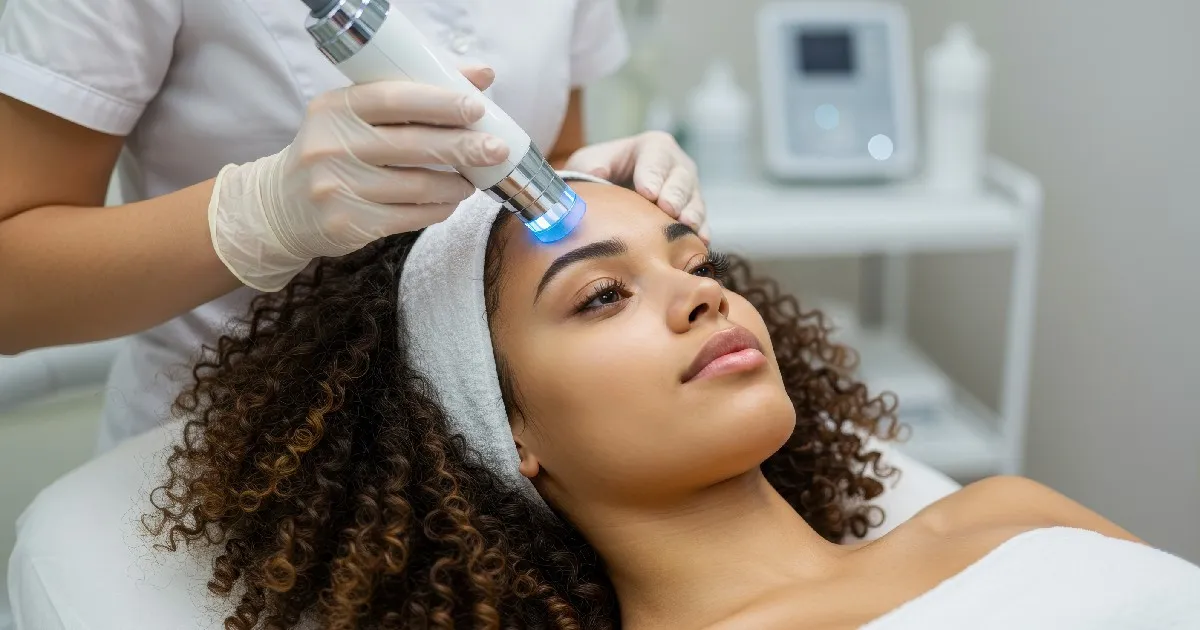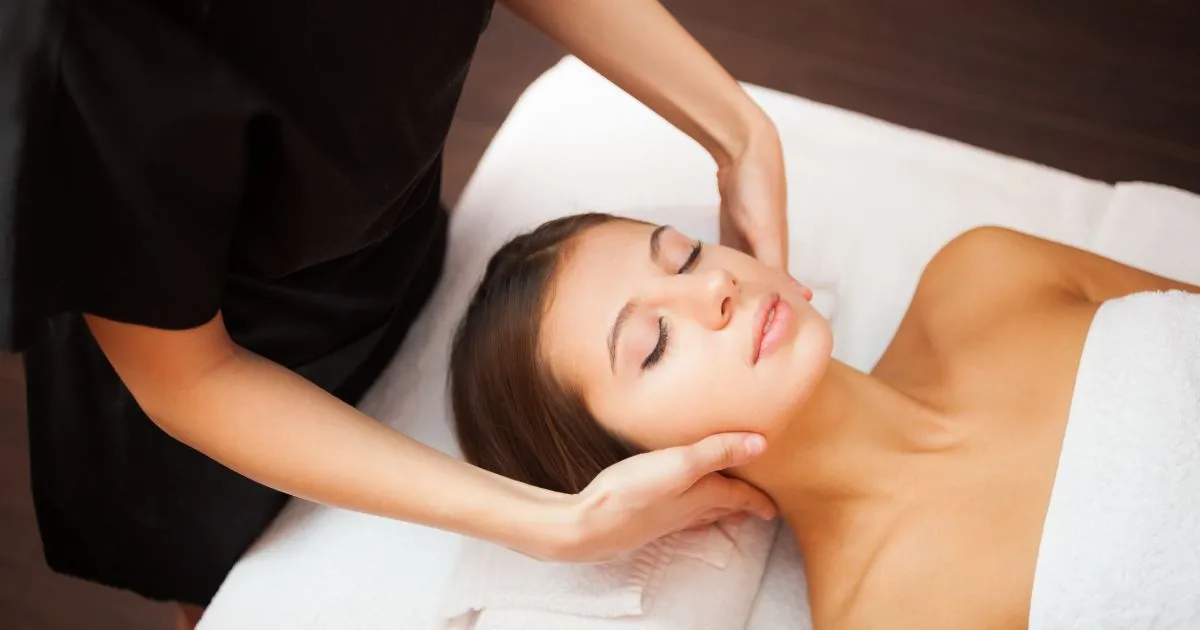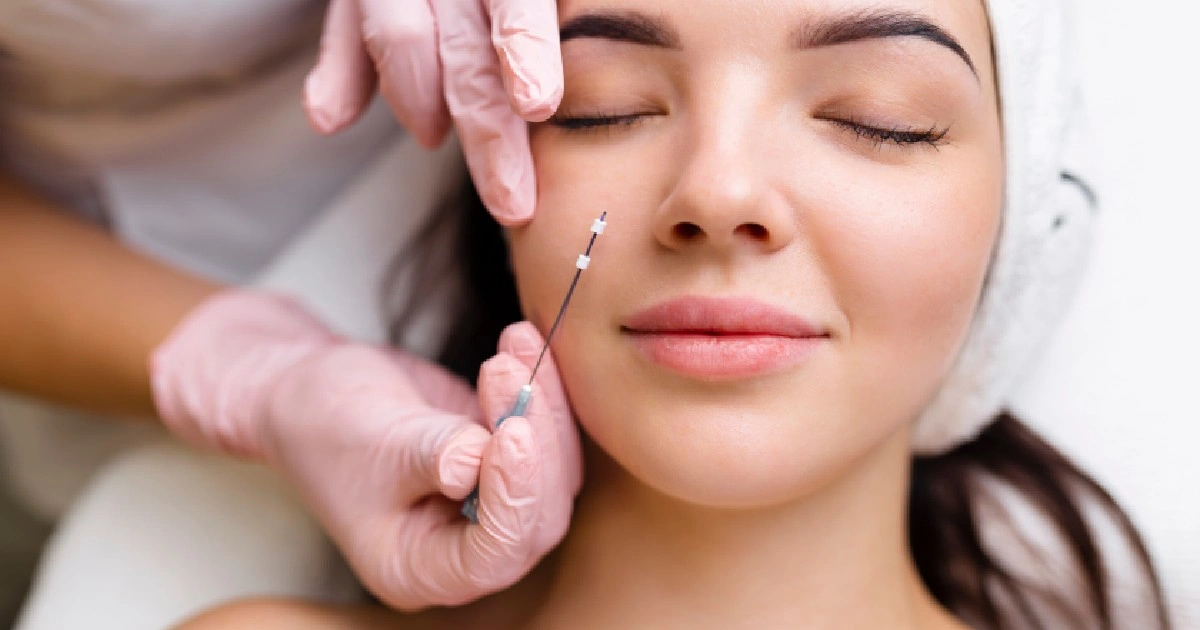Getting skincare just right can be hard. Many people experience acne, irritation, and dryness, but don’t fully understand the reasons these occur. Moreover, even though the terms “combination skin” and “oily skin” have gained popularity and products are readily available to combat various issues, a large percentage of people don’t know where they fall on these skin scales and don’t understand how to solve their skin troubles.
That’s where we come in! Our experts are available to consult and treat patients with varying skin problems. Read on to learn about the types and causes of skin conditions and to find the best skincare routine for you.
What’s Your Type?
Skin is the largest organ in the human body, so it’s no wonder that specific areas of your body have different skincare needs than others. It’s important to figure out what skin category—or categories—you fall into in order to know where to go from here. Additionally, although roughly 50 million people in the United States are affected by acne each year, it is not the only issue people deal with.
One of the most basic ways to get on track to treating your skin issues is figuring out which of the four common types of skin you have. It may also be beneficial for you to speak with a professional in person, so they can analyze your skin type and any issues you may experience. Skincare routines vary for each type of skin, so it is critical to take the time to identify what you’re working with. Schedule an appointment with the SeaMist MedSpa team today!
Normal Skin Type
People who fall into the normal skin type category have well-balanced skin. This skin type is considered healthy and is known scientifically as eudermic skin. If you have small, barely-visible pores and don’t experience oiliness or dryness commonly, you likely have normal skin type. It is important to note, however, that even though people with normal skin types don’t necessarily experience the daily issues that can come from dry, combination, and oily skin, they can still experience blemishes. Aging, major life events, hormone levels, and genetics can all factor into your skin type and the issues you may experience. Incorporating a skin routine can keep your skin clear and vibrant. See below for our suggestions for your beauty regimen!
Dry Skin Type
Dry skin can be quite irritable. Dry skin produces less sebum than normal skin, which can lead to skin feeling tight and becoming flaky. Sebum is an oily substance that is secreted by the sebaceous glands in the skin to keep the skin lubricated and soft. Like any skin type, dry skin can result from a number of factors; genetic conditions that affect sebum levels, age, and lifestyle choices can have important effects on skin dryness. Although many people believe that a lack of moisture is solely to blame for skin dryness, dry skin actually has similar water content to oily skin. If you have barely-visible pores, suffer from general skin irritation, and experience premature wrinkles, you likely have dry skin type. Check below to see our recommendations for your personalized skincare routine!
Oily Skin Type
Do you deal with shiny skin? Experience awful acne breakouts? You just might have oily skin type. Although every type of skin can have some oily spots and everyone has had a bad breakout or two, people with the oily skin type generally have heightened sebum production. This condition is also known as seborrheic dermatitis. Many people with oily skin struggle with blackheads and whiteheads and pores are often much more visible. A lot of people who have oily skin notice that when they wear makeup, it tends to slide off the skin throughout their day. It’s not all bad, though—oily skin prevents wrinkles from forming as easily, which means signs of aging appear later. Like with all skin types, age and genetic makeup play a role in bringing about oily skin. That being said, there are changes you can make to your habits and lifestyle to decrease shine and balance your skin. Look below to see what we recommend for your specific skin type!
Combination Skin Type
Do none of the types seem to apply to you—or, rather, do all of them? If so, you might have combination skin. People with combination skin commonly experience two (or more) skin types on their faces. You may see shininess in your T-zone (the area that includes the forehead, nose, and chin), but have dry, flaky cheeks. Combination skin is tricky! Many people see their shininess and think their skin falls into the oily category when really they have combination skin. If your skin is not oily all over—that is, if you have any dry OR normal areas—you actually have combination skin! Additionally, because people with a combination skin type deal with multiple types of skin, it can be quite challenging to find the ideal skin regimen.
Sensitive Skin
The fifth and final main skin type category to mention is sensitive skin. Normal, dry, oily, and combination skin types all have their distinctive characteristics. On the other hand, people with any type of skin can experience sensitive skin. Although it is significantly less common in people with normal skin types, sensitive skin can affect anyone. Common symptoms from sensitive skin are redness and irritation. It is important to note that sensitive skin types can arise because of allergies and conditions like rosacea, so people with highly-sensitive skin should consult a dermatologist to learn more about how to treat their skin.
Now that we’ve discussed the different skin types, let’s talk about what you should include in your skincare regimen to bring the best results!
Toners, Moisturizers, and Scrubs, Oh My!
Maybe you just learned what your skin type is. Maybe you already knew. Regardless, you may be wondering what the best skincare routine is for you and your skin. Keep reading to find out what our expert team recommends for your skin needs!
Skincare can seem complicated, but every routine essentially uses the same building blocks. In fact, almost every skincare routine is broken down into a few simple steps:
- Cleanse: during which you wash your face to remove makeup, excess oils and debris.
- Helps prep your skin for the following steps
- Helps to balance your skin
- Exfoliate: physical (scrubs) or chemical (acids) exfoliants help to remove the dead skin cells from the outer layer of your skin.
- Skin will appear brighter and smoother
- Treatment products will penetrate the skin more effectively
- Treat: this is where it is important to know your skin type to help heal and combat various skin concerns.
- Retinol – promotes cellular turnover to help with aging and acne
- Green tea – full of antioxidants to help protect your skin from environmental factors while soothing, calming, hydrating the skin
- Hyaluronic acid – plumping and hydrating
- Glycolic and salicylic acids – exfoliating and help to control excess oil production
- Vitamin C – full of antioxidants to help protect your skin from environmental factors while brightening the skin
- Moisturize: which hydrates your skin and makes it smoother
- Protect: by far the most important step in your daily skincare routine!
- Physical/Mineral (zinc oxide and/or titanium dioxide) based sunscreen of SPF 30+ helps to deflect harmful UV rays from penetrating the skin
Normal Skin Type
Those who are blessed enough to have normal skin types know that it doesn’t mean their skin is always flawless. You should still follow a proper skincare regimen to avoid any skin issues. Follow the skincare routine steps listed above every day! Consistency and prevention are key to long-term healthy, young-looking skin, so we recommend avoiding products that cause excessive greasiness or dryness. We suggest products like Sea Scrub Perfecting Polish to enhance your skin texture and tone and keep your complexion bright and beautiful. This cleanser, and many of our other exclusive products, is a good choice for all skin types!
Dry Skin Type
As mentioned above, it is important to integrate all three of the core steps for a skincare routine to be successful. For dry skin, however, cleansing isn’t always simple; in fact, given the lack of essential oils on the face, it is recommended for people with dry skin types to use lukewarm water rather than hot water outright. Hot water can strip the oils off the skin and, therefore, make your skin condition worse. Dry skin also tends to be more sensitive to products, so it is important to choose a gentle cleanser like micellar water to reduce the chance of irritation. Exfoliating properly can improve the appearance of dry skin, as well, since it gets rid of the buildup of dead skin cells. Once again, because dry skin is easy to irritate, you should choose a gentle exfoliant to achieve the best results. Physical and chemical exfoliants can be used weekly, as opposed to every night! Lastly, you should apply your nightly moisturizer to your skin when it’s still damp, which is when the skin is most absorbent. It also might be a good idea to use a moisturizer over a separate facial oil product to get an extra dose of moisture.
Oily Skin Type
All skin types are unique, and oily skin is no exception. Because oily skin produces excess sebum, it is often necessary to cleanse your skin twice each day, in the morning and at night. If you’re interested in makeup, look for products that are described as “matte.” The best products for oily skin type are non-comedogenic: they don’t clog your pores. Additionally, if you have oily skin, you should choose oil-free products. Some active ingredients, such as sulfur, retinol, and salicylic acid, also support normal gland functions. Choosing a product that uses one or all of these may help keep your complexion clear and control shine. Like with dry skin, it can be helpful to avoid irritants and to only exfoliate once or twice a week. Though you may be desperate to fix your natural shine, you shouldn’t over-cleanse. When you scrub too harshly or clean too often, your oil production can actually increase. Instead of turning to scrub, try a clay mask a couple of times a week to mitigate your dry skin symptoms. Moreover, though it may seem counterintuitive, you want to moisturize your skin daily if you have oily skin.
Combination Skin Type
Like we mentioned earlier, people with combination skin types have areas on their faces that present two or more skin types. Therefore, striking a balance is important. A product that works wonders for one area of your face may dry out or irritate another. You want to avoid anything that completely strips the oil out of your skin. On the other hand, you don’t want to use any products that can increase your oil production. Cosmetic providers generally recommend choosing products that feature a combination of acids, antioxidants, and hydrators. Acids exfoliate, antioxidants brighten, and hydrators, well, hydrate. Salicylic acid, a known acne-fighter, can sometimes be helpful for people with combination skin. You may also want to find a product that incorporates vitamin E or green tea since they are antioxidants that can repair and prevent damage from free radicals. It can also be useful to consult with a skincare expert to create a skincare regimen or undergo a facial that is customized to you.
The Golden Rule
No two people are alike, and neither are their faces. You should speak with a medical professional to determine whether your skin condition is caused by any underlying medical condition. These professionals can also help you figure out any potential irritants or allergens that bother your skin. Cosmetic providers can work with you to customize a medical-grade skincare routine that’s as unique as you are. Many spas offer treatments, as well, which can help you on your skincare journey.
Finally, the golden rule for every skin type is making sunscreen a part of your daily routine to help protect your skin from sun damage. The Food and Drug Administration (FDA) recommends using a broad-spectrum sunscreen with at least 30 SPF every day and reapplying it every two hours or sooner, depending on your activity and exposure to moisture.
We recommend our exclusive SeaMist Sun Tan Defense, which provides a matte tint, SPF 50, and is gentle enough for all skin types.
See Results
SeaMist MedSpa is dedicated to addressing and treating your skin concerns, all while offering a relaxing environment for you! For further information, please contact us by sending us a message or call us at (401) 782-2400 on weekdays between nine AM and five PM. Schedule an appointment and see the wonders we can do for you and your skin! We also offer body contouring, such as CoolSulpting and Emsculpt.
Have you visited us before? Do you use any of the products or techniques we mentioned? Tell us about your experience in the comments! We look forward to hearing from you.








